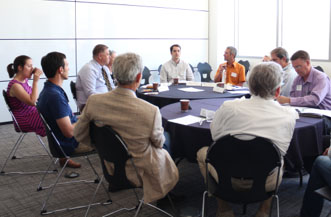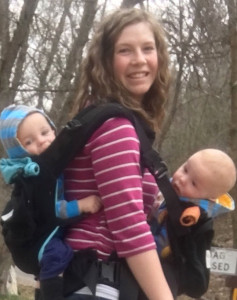By Jamie Holmstead for EDRblog.org.
A few weeks ago I had the privilege to attend the Environmental Dispute Resolution Program’s Dialogue on Collaboration seminar. This seminar was focused on the importance and challenges of involving elected officials in collaborative efforts, specifically water-related issues. As I prepared myself mentally for what I would encounter at the seminar, I was excited by the prospects of learning more about collaborative efforts being done in the area of water, since I have a particular fondness for water issues due to my time spent in college at the University of Idaho studying fisheries biology.

The seminar started with presentations by three individuals. The first speaker, former Salt Lake City Mayor Ralph Becker, talked about his experiences with collaborations, giving a list of efforts in which he took part over the years. One thing particularly stuck with me: his statement that elected officials are natural collaborators. It reminded me of something I learned from a professor. We were learning about creating a successful collaboration and he told us that in order to have collaboration work on a large scale, i.e. multi-stake holder groups, it has to be done on a small scale, i.e. inter-office collaboration. He said that if one doesn’t know how to collaborate with co-workers, then there is little possibility that they would be able to collaborate with other stakeholders because they do not possess a collaborative mindset. Mr. Becker also touched on the importance of involving the public early and often during the scoping period because it allows the public to feel invested in the solution and it also decreases the amount of negative feelings the public would have to the outcome.
Get notified when new articles are posted to the EDR blog – sign up for our email list »
The second speaker, Bob Fotheringham, reminded us that everyone has a diverse perspective on a given issue, especially when it comes to terminology. For example, when an engineer is talking about Computer-aided Drafting (CAD) he is talking about a computer program, but if you mention this word to an English professor they may think you are talking about someone that has acted in an ungentlemanly fashion. To have success in collaboration it is important that everyone understands the terminology that is being used.
Get notified when new articles are posted to the EDR blog – sign up for our email list »
The third speaker, Alan Matheson, started off with a question: Why involve elected officials in collaboration? He listed four reasons: to bring credibility to the process, to bring attention to the issues, to bring implementation resources to the table, and to make solutions more enduring though legislation. He then asked another question: What is an elected official’s role in a collaboration process? He said they could be a convener, help frame the collaborative process, help resuscitate a struggling process, and help move things along. He also discussed important things to consider when involving elected officials in collaborative efforts. For example, it is important to choose an official that is passionate about the topic, but also has time available for the project. The optimal situation is for the elected official to promote and support collaboration, not impede progress.
After the speakers had presented, the large group broke into small breakout sessions to discuss how the panel presentations might be relevant to the participants’ own work. As I sat down at a table with one of the groups and we introduced ourselves, I was intrigued by the large array of people and professions that were represented. There was a lawyer, a few scientists, an environmentalist, and representatives from the state senate, Native American tribes, and Trout Unlimited.
Two of the small group discussion questions focused on the things that elected officials need to do to change in order to be better collaborators or what they could do to promote collaboration. I wondered how this discussion would be beneficial in the long run. Though the questions were thought provoking, and there was a clear need to take the discussion further, but it seemed futile since we had no elected official present to whom the feedback could be directed. Once our small group discussion time was up, all participants met together and heard a report back about the conversation in each small group.
The final presentation, given by Dr. Sarah Jack Hinners, Acting Director of the Ecology Planning Center at the University of Utah, touched on the perspective of individuals and the barriers to good decision-making. She presented a way to overcome blockades of mis-communication and various perspectives: her idea is to create a visual model of the on-the-ground situation under discussion (aka a “boundary object”) that everyone could agree on and refer back to during planning meetings. As different possible solutions are suggested, the new approach can be inserted into the model to see how it works and to see what unintended consequences might be. Dr. Hinners then presented a scenario planning modeling program called Envision Tomorrow Plus (ET+) that she has been working on, which is designed to help groups weigh choices, test possible policies, help develop optimal strategies, and create new approaches to planning.
 This Dialogue on Collaboration was a good step toward raising the profile of collaborative efforts by providing a safe place for all to learn and express concerns about not just bringing people together, but bringing the right people together in order to find a positive solution.
This Dialogue on Collaboration was a good step toward raising the profile of collaborative efforts by providing a safe place for all to learn and express concerns about not just bringing people together, but bringing the right people together in order to find a positive solution.
Jamilee Holmstead is a wife and mother of twin boys. She holds a Bachelor’s of Science in Rangeland Ecology and Management from the University of Idaho and a Master’s of Science in Sociology from Utah State University. While in graduate school, she studied facilitation under Steve Daniels, and has continued in the field of facilitation and mediation.
